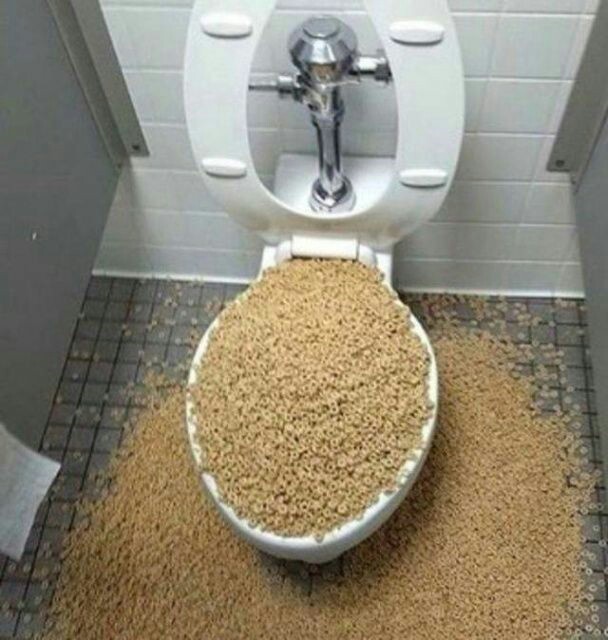Can One to Flush Food Down the Toilet?
Can One to Flush Food Down the Toilet?
Blog Article
Are you trying to find related information around Think Twice Before Flushing Food Down Your Toilet?

Introduction
Lots of people are often faced with the problem of what to do with food waste, particularly when it comes to leftovers or scraps. One usual inquiry that occurs is whether it's alright to flush food down the bathroom. In this post, we'll explore the reasons individuals could take into consideration flushing food, the consequences of doing so, and different techniques for correct disposal.
Reasons individuals might think about flushing food
Lack of awareness
Some individuals may not be aware of the potential injury caused by purging food down the commode. They may erroneously think that it's a safe practice.
Benefit
Flushing food down the toilet may look like a quick and easy service to getting rid of unwanted scraps, particularly when there's no close-by trash bin available.
Negligence
Sometimes, individuals may just choose to flush food out of large idleness, without thinking about the effects of their actions.
Effects of flushing food down the toilet
Environmental influence
Food waste that ends up in waterways can contribute to contamination and damage water environments. In addition, the water made use of to purge food can stress water sources.
Plumbing problems
Flushing food can bring about stopped up pipes and drains, causing pricey plumbing repair services and troubles.
Sorts of food that should not be purged
Coarse foods
Foods with fibrous textures such as celery or corn husks can obtain tangled in pipes and cause obstructions.
Starchy foods
Starchy foods like pasta and rice can soak up water and swell, causing clogs in pipes.
Oils and fats
Greasy foods like bacon or food preparation oils need to never ever be purged down the toilet as they can strengthen and create obstructions.
Proper disposal approaches for food waste
Utilizing a garbage disposal
For homes equipped with waste disposal unit, food scraps can be ground up and purged via the plumbing system. Nonetheless, not all foods are suitable for disposal in this fashion.
Recycling
Specific food packaging materials can be recycled, decreasing waste and reducing ecological influence.
Composting
Composting is a green means to throw away food waste. Organic products can be composted and made use of to enhance dirt for gardening.
The relevance of proper waste management
Decreasing ecological damage
Proper waste monitoring techniques, such as composting and recycling, assistance lessen air pollution and protect natural deposits for future generations.
Safeguarding pipes systems
By avoiding the technique of flushing food down the bathroom, homeowners can prevent expensive pipes repairs and preserve the honesty of their plumbing systems.
Final thought
Finally, while it may be tempting to flush food down the bathroom for ease, it is very important to understand the prospective effects of this activity. By taking on appropriate waste administration practices and dealing with food waste responsibly, people can add to healthier plumbing systems and a cleaner setting for all.
FLUSH FOOD DOWN THE TOILET?
FLUSHING FOOD CAN CAUSE BLOCKED DRAINS IN YOUR HOME
All of the plumbing fixtures in your home are connected to the same sewer pipe outside of your home. This outdoor sewer pipe is responsible for transporting all the wastewater from your home to the Council sewer mains. Even small pieces of food that go down the kitchen sink can cause problems for your sewer. It should therefore be obvious that flushing larger bits of food, such as meat, risks a clog in either the toilet itself or the sewer pipes. Flushing greasy food is even more problematic because oil coagulates when it cools, coating the interior lining of your pipes.
THE TOILET IS NOT A BIN
Food isn’t the only thing that people shouldn’t be flushing down the toilet. People use the toilet to dispose of all kinds of things such as tampons, makeup wipes, dental floss, kitty litter and even underwear. Water goes to great lengths to educate residents about the high costs and stress placed on wastewater treatment systems simply from people flushing the wrong stuff down the toilet. It costs taxpayers millions of dollars each year, and homeowners thousands in blocked drain repairs.
FLUSHING FOOD IS A WASTE OF WATER
Flushing food is a waste of our most precious resource - water. In June this year Level 1 water restrictions were introduced to protect water supply from drought conditions. Much of New South Wales continues to be affected by prolonged drought with recent figures revealing up to 97 per cent of the state remains in drought. Depending on whether you have a single or dual flush toilet, every single flush uses between five and 11 litres of water. In the current climate this is a huge amount of water to be wasting on flushing food that should be placed in the bin (or better yet, the compost).
https://www.jabplumbingsolutions.com.au/blog/can-you-flush-food-down-the-toilet

Hopefully you liked our excerpt on Flushing Food Down the Toilet?. Thanks so much for taking time to read our article post. I beg you take the opportunity to distribute this blog entry if you appreciated it. We cherish your readership.
Request Service Report this page